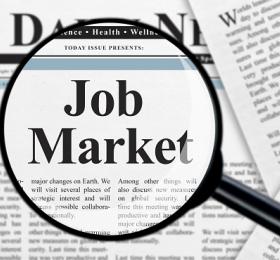
261,000 new jobs were created in the month of October. Hourly earnings increased 0.4% MoM, which puts us on pace for roughly 5% annualized wage gains. Of course, we will be paying close attention to the upcoming CPI figures to see if American earnings were actually positive in real terms last month (real terms are inflation-adjusted). Surprisingly, the official unemployment rate and U6 both ticked higher last month as labor force participation contracted for a second straight month. Productivity among workers is also slipping, which doesn’t help us at all on the inflation front. Moreover, job openings (JOLT’s) topped 10.7M in September, indicating substantial underlying demand among US employers. This is not the backdrop that Jay Powell and his colleagues at the Federal Reserve would like to see after the most aggressive stretch of interest rates hikes in approximately four decades.
The bar is pretty high for the Fed to pivot from raising interest rates in the near-term. At its most recent FOMC meeting, the Federal Reserve increased the effective federal funds rate to 3.83%. For those keeping score at home, this is the fourth consecutive increase of 75 bps (0.75%). Mr. Powell signaled in his comments following the meeting that the terminal rate for fed funds may well be higher than currently anticipated given the inflationary backdrop. Meanwhile, he also suggested that the size of rate hikes may decrease relatively soon. While some may debate the path to the terminal rate, we are more keenly interested in where the terminal rate actually is. At this juncture, it does not seem as though Powell has a clear picture of where the high point in this cycle will be, though he must also be concerned about some of the more recent developments in currency markets around the globe (we covered a few of them last month and the list of anomalies continues to grow). To us this suggests a highly data dependent Fed with a strong reaction function. Cracks are beginning to develop in the domestic economy; the last bastion of strength is the labor market. Should today’s uptick in unemployment herald the beginning of a new normal in Laborland, then markets will undoubtedly breathe a sigh of relief.
Earnings for 3Q are practically in the books, but the high tide for this political season is upon us. Much hangs in the balance as both chambers of Congress are up for grabs. For our part, the piece that will be most important is the trajectory of fiscal policy, and its impact on the US economy. The amount, timing, and “flavor” of policy will have a significant impact on the investing landscape in 2023. So, we will be keeping a watchful on eye on any changes within the legislative branch in the days and weeks ahead. Back to earnings, the US dollar, inflation, and tighter financial conditions are beginning to bite into the bottom line of corporate America. Short-term rates in the US continue to drive the greenback higher on a trade-weighted basis, while the mean spread on US investment grade debt over the 10 yr UST is currently running at ~1.58%, which is still relatively benign by historical standards. However, we are shifting down on the earnings front, and the S&P 500 is now tracking for mid-single digit growth at the operating level YoY. Though policy has presented many challenges to the C-suite in 2022, the US consumer is still in good shape, and there is plenty of cash in the system (real M2 >$7.2T). Given the resilience of domestic consumption in tandem with the stickiness of inflation, we do not anticipate a meaningful reacceleration of earnings in the near future; rather we expect similar growth over the course of the next 12 months as well. From the standpoint of corporate profits it isn’t all bad out there, but it certainly isn’t all good either. The mid-term elections will carry a significant amount of weight for markets going forward. We will be back when the political dust has settled.
Market Outlook: Neutral USD, Neutral Duration, Neutral Equities
News Release: Bureau of Labor Statistics (The Employment Situation- October 2022)